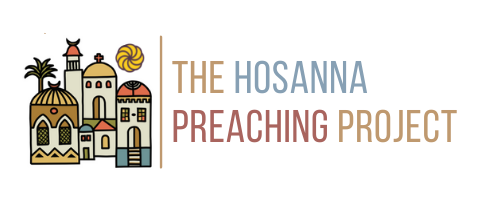Hosanna Preaching Project Backstory
It has been said that home is where the heart is. Home is remembered as the place where one flourished and is remembered with joy; when one has lost their home, that joy is mixed with an ever-present sadness and longing. In 1915, a ten-year-old Osanna Panian left home and escaped what is now known as The Armenian Genocide; she survived and walked over the mountains into Iran and life as a refugee. Was she just lucky that she survived what Winston Churchill later called the first holocaust of the twentieth century? Or was it Providence?
Osanna is the Latin version of the Greek word hosanna. It’s a popular girls’ name in the Eastern Orthodox tradition, but it is also a liturgical word with Hebrew and Aramaic roots meaning “Save me!” or “Help me!” When sung in the liturgy on Palm Sunday, this beseeching cry has the feel of a profound prayer for deliverance. Osanna Panian was given this liturgical name because she was born on Palm Sunday in 1905. Little did anyone know on that day of sung hosannas that this new life would indeed be saved from the horrors of a genocide in which 1.5 million Armenian Christians perished while under the control of the Muslim Ottoman Empire.
Osanna was saved by the joint efforts of the Muslim and Christian community over the border in Iran; they offered two gold coins to anyone who could “deliver a live Armenian from the massacres.” Osanna ended up where her family always feared, “over the mountains” in Muslim Iran. Ironically, she lived a fuller and richer life there than her surviving siblings who ended up in the Soviet Union in faraway Moscow. Osanna’s life spanned most of the twentieth century and she lived it decade after decade, as with all exiles, longing for home. She raised three children in the Christian community in Iran and six grandchildren. As with all refugees, she nurtured her family to have a special attachment to her lost homeland of Armenia.
In 1991, five years after Osanna died, the Soviet Union collapsed, and Armenia gained independence, becoming a sovereign country, with only a fraction of its historic lands. One of Osanna Panian’s grandchildren is Presbyterian elder, Noushin Darya Framke who established The Hosanna Preaching Seminars in her grandmother’s honor, “with the hope that all refugees might find their way home.” It is this same hope that sustains The Hosanna Preaching Seminars and the conversations around finding a way home for those in some version of exile today.
By its name, The Hosanna Preaching Project (formerly The Hosanna Preaching Seminars) seeks to honor a very special woman who, at a young age became a refugee, a person who was never able to return to her native home. In honoring her, we remember the vast numbers of God's children who have been driven from their homes and made refugees in our own time. In particular we think of Palestinian refugees, the largest number of refugees today, who long for home and hope for a day of return. May the fruits of this program contribute to the home-coming of all those who long to be welcomed home.
Look closely. The Hosanna Preaching Project logo, which is modeled on the PJN logo, includes the ancient Armenian Symbol of eternity.

